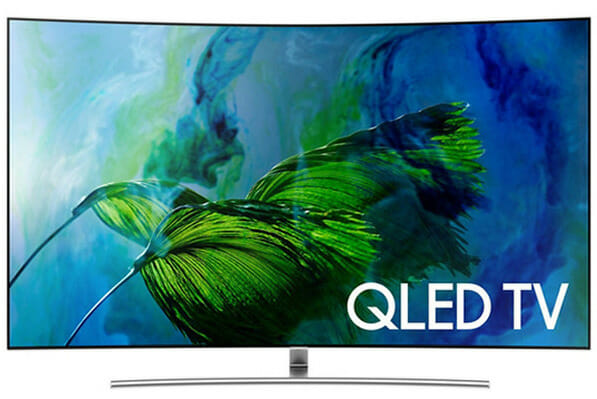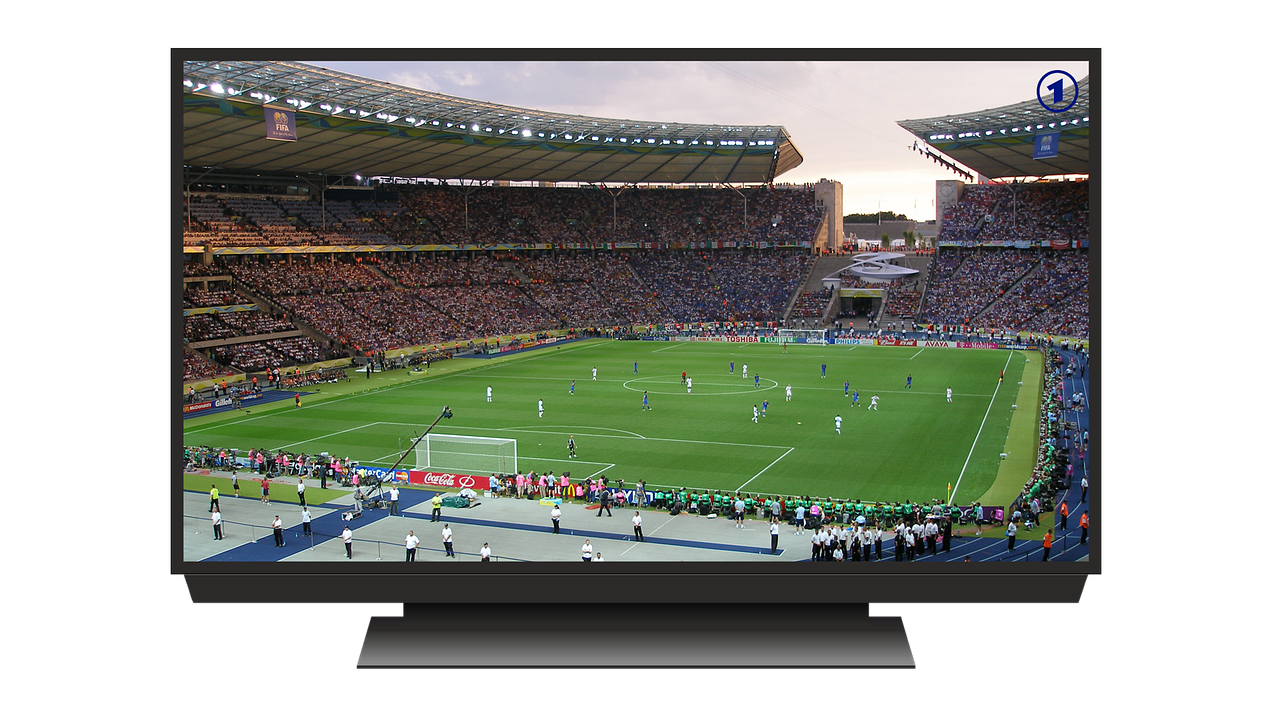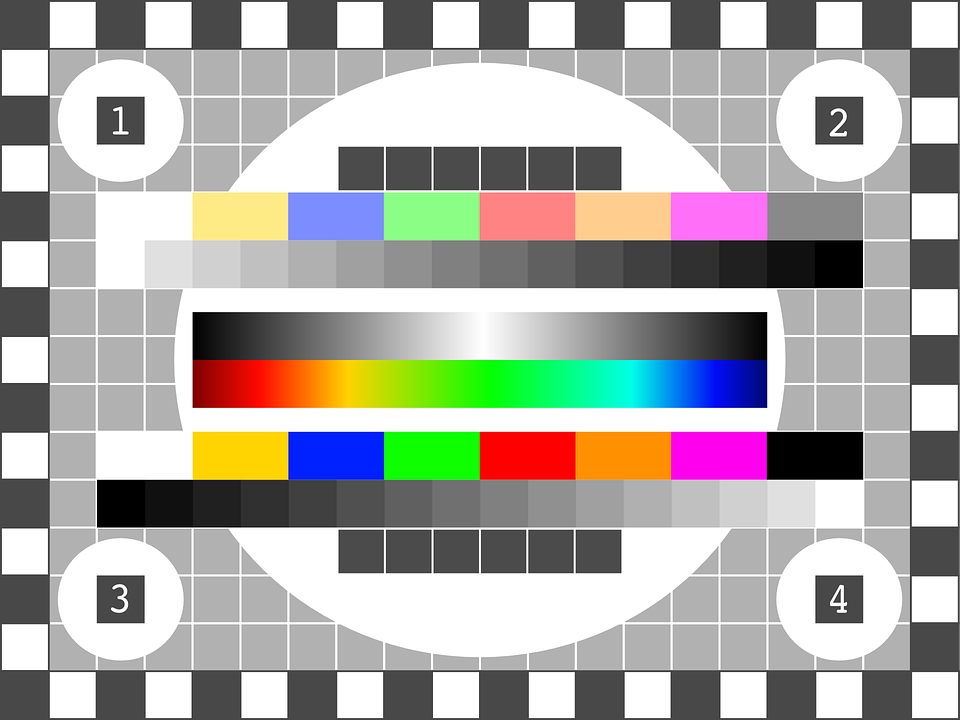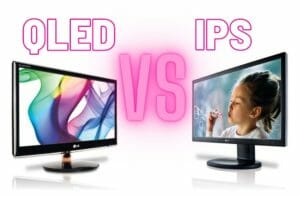Table of Contents
QLED TVs. IPS panels: what do they offer, and which one should you go for?
As you look for a new screen, many people consider size and resolution the essential factors. However, while the resolution and size (see 24 inch monitors) are vital factors to consider, the display technology behind the screen is also critical.
Should you consider the traditional LCD with an IPS panel, or instead go for the QLED displays? The panel type is an essential factor in determining color accuracy, viewing angle, image quality, energy efficiency, refresh rate (see 120Hz, 144Hz, and 240 Hz monitors) response time, etc.
Key Takeaways
- Quantum dots are used in the QLED technology's display. When light strikes tiny molecules known as quantum dots, they release a range of colored light.
- The pixels on LED monitors light up thanks to a particular type of backlighting technology. It is possible to mix together LED and LCD televisions.
- Although both types of displays employ liquid crystals to create their images, the difference between them is that LEDs have a backlight.
- IPS monitors are well-liked for their accurate and vivid color reproduction.
- Some IPS screens might use LED display technology, creating a streamlined and portable design.
What is QLED TV Technology?
Quantum dot technology is new in the world of monitors, and it is not a type of LCD though it is more similar to LCDs than to OLED. It is a different type of TV, much like the older plasma TVs before it.
The QLED technology uses quantum dots for its display. The quantum dots refer to microscopic molecules that emit different colored light when they are hit by light. The dots in the LG quantum dot TVs come in a film, and an LED backlight helps to produce light.
The LED backlight then travels inside the TV through other layers, including the liquid crystal display layer that helps make the image. The LED backlight travels through the various layers to the screen's surface, thereby making it transmissive.

Is QLED an LCD TV?
QLED is not a type of LCD TV. LCD stands out as the most dominant panel technology, and it is cheaper than OLED TVs. OLED doesn't need an LED backlight to light. It lights by employing millions of OLED subpixels. The millions of pixels refer to the tiny dots that make the image. The pixels produce light to create images, and this leads to various kinds of image quality. Some of the qualities favor LCD, but most of them favor OLED.
Is IPS Panel Technology the Best Option There is?
In-Plane Switching technologies have been popular among creative professionals looking for the most accurate colors with no loss of color production quality, irrespective of viewing angle.
IPS displays offer the best color production and a wide range of viewing angles (see also ultra-wide monitors). They are also more expensive, and they come with higher response times and have significant latency. If you are a gaming enthusiast, IPS panel displays may not be your first choice as the high latency may cause motion blurs and ghosting.
IPS monitors (see Dell) use liquid crystals aligned in parallel to offer rich and accurate colors. The panels were designed to overcome the challenges of TN technology. The liquid crystals shift horizontally to provide you with better viewing angles.

The colors in an IPS panel don't shift when you look at the monitor at an angle. When it comes to color accuracy, IPS displays reign supreme. The panels offer better contrast enabling you to achieve the darkest blacks and the brightest whites. It is also able to support professional color technologies such as Adobe RGB.
IPS panels offer better color accuracy than VA panels.
What to Look for in Computer Monitors for Professionals
Huge number of professionals enjoy numerous benefits of display technology. No matter what you do, or whatever you use your monitor for work for, you will need the best features in one.
Graphic Designers
As far as graphic designers go, you shoud really stick with a 4k monitor and for that matter, one that offers the best possible performance. Ideally, graphic design monitors should come with as many types of ports as possible. High-end monitors tend to include DisplayPorts insteas of VGAs to handle high resolution, color saturation, and internal calibration, and it is rightfully the most useful connector for creatives.
Photographers
Photographers should avoid VGA as a connection type. For that reason VGA port is often replaced with a Mini DisplayPort on newer monitors. Same goes for DVI. If you own a monitor for photo editing and a fitting graphic card with drivers that support 10 bit per color, there will be lots of benefits to go with a DisplayPort connection.
Architects
When looking for a monitor for architects one should focus on color, brightness, and contrast. Optimal color performance and resolution is what most monitors for architects are equiped with. We should also point out that best monitors for CAD and similar demanding software share similar features and technology.
Traders
To trade without hinderence you will need a top monitor for traders to make sure that the trade goes smoothly. The screen size matters, with better resolution, you get the better image quality, and most importantly with flicker free, and anti-glare screen features, you won't to strain your eyes in artificial light. For multiple displays set up and office desktop stations bezel-less monitors would be ideal for maximum screen space.
Programmers
Features like high resolution, vibrant colors, clarity, response time and refresh rate are important in monitors for programming and are welcomed when you're spending long hours at work. Also, monitor size and orientation are equally relevant. Also, look for a monitor with vibrant colors and excellent viewing angles which are usually found in a 4k monitor.
LED TV vs. IPS: Which One is Better?
LED monitors (see Samsung) use a type of backlight technology in which the pixels light up. It is not unlikely to confuse LED TVs and LCD TVs. While the two types of monitors use liquid crystals for their picture formation, the difference is that LEDs feature a backlight.
Some IPS displays may incorporate LED display technologies which result in a sleek and compact design. One benefit of incorporating the LED panel technology is achieving a top-notch contrast ratio and brightness while maintaining low energy consumption.
Numerous low-end LED monitors are available, which come with more reliability and multiple features.
On the other hand, IPS monitors are popular for their vibrant and detailed color accuracy. The monitors (see HP) also maintain color consistency even when you watch from extreme angles. If you like participating in multiplayer games with your friends across an extensive sitting arrangement, the picture precision of the IPS panel monitors is a big plus.
So, which one between IPS and LED monitors is the best?
LED panels are reputable for their minimal energy consumption and bright pictures. On the other hand, IPS monitors offer better color reproduction and enhanced image accuracy. Simply put, LED TVs are less expensive, while IPS screens provide better picture quality.

If you are a gaming enthusiast, you also need to be careful which gaming monitor you choose. LED monitors are a perfect choice for competitive gaming. However, IPS gaming monitors offer various gaming tricks, including better image qualities than VA panels (some are monitors with speakers). The IPS monitors will be an excellent choice if you want to get the most accurate color depiction while playing.
Additionally, the IPS monitors will maintain color accuracy irrespective of the watching angle. Therefore, nobody will mind their sitting position while watching a movie or participating in a game.
The monitor response time is also a vital factor to consider when looking for a monitor. The response time refers to the duration for a screen to change from one color to the next. The response time differences are more evident when you are playing fast-paced games and content (see how G-Sync monitors perform in games).
Although IPS monitors were formerly criticized for their slow response times, there has been tremendous improvement in the area. An LED display panel with TN or VA technology is an excellent option for a monitor with a fast response time. However, the monitors have inferior image quality and fewer viewing angles than the IPS displays.
What's more?
Since IPS panels use more power than their LED display counterparts, they release more heat. Although LCD monitors offer brighter pictures, they produce less heat than monitors with IPS technology.
Which of the two types of monitors is more expensive? An IPS technology monitor is more expensive than an LED monitor. The price (see budget monitors) can also go up further depending on whether the display uses other technologies such as a TA panel or another LCD type. Mid-range IPS panel displays can cost more than high-end LCD monitors (see also monitors under 200 dollars).
Are IPS Monitors Better than OLED TVs?
Should you go for an OLED TV in place of an IPS panel technology?
Unlike other LCD technologies such as TN, VA, and IPS panel technologies, OLED displays don't use a backlight to produce images. Instead, they produce their light which offers a high contrast ratio resulting in outstanding image quality and less eye strain.
In terms of power consumption and longevity, OLED and LED monitors don't have a lot of differences depending on the brightness levels you use. While both display technologies allow for a thin design ideal for portable monitors among others, OLED technology displays can be thinner and compact.

In terms of screen resolution, LED and OLED screens offer 4K Ultra HD resolution (see more on 4K monitors), which is a vital consideration when buying a new TV. It will also help a lot if the screen offers HDR support. Whether Dolby Vision or HDR 10, HDR uses the screen's wide color gamut, brightness, and contrast capabilities such that each image is represented the way it should be.
Before buying an HDR TV, ensure your favorite movie or TV show supports it as not all types of content support HDR. However, even if your favorite content doesn't support HDR, it is an excellent way of future-proofing your TV.

Which one between OLED and LED TVs offers the best viewing angles? As mentioned earlier, IPS panels are reputable for providing a wide range of viewing angles irrespective of the viewing position.
However, even the wide viewing angles of the IPS can't come close to what OLED panel technology offers in terms of viewing angles.
OLED TVs may not offer the brightness you can get from some high-end LED TVs in terms of brightness and contrast. However, OLED monitors are reputable for their superior contrast ratio. It makes it possible to achieve the darkest blacks and brightest whites.
Some LCD TVs also offer a local dimming feature that enables them to dim particular parts of your screen that should be dark without affecting the bright ones. You'll find two types of backlight with local dimming, including edge-lit and full-array local dimming.
The full array dimming offers the best quality pictures though it can cause blooming or haloing as a side effect. The side effect will make an image surrounded by dark pixels have a light ring around it. Edge-lit local dimming is not very effective as they have various dimming zones around your screen, unlike the full array that has dimming zones across the entire screen.
The main issue with OLED TVs is image burn-in. If your static image has a static image for an extended period, there are chances it will burn in and remain visible in your screen's background permanently. However, new OLED models come with pixel shifters, built-in screen savers, and other features that help deal with the image burn-in problem.
Verdict
When you want to buy a new TV, you have various display technologies to choose from, including OLED and IPS panels. IPS panels are popular for offering wide viewing angles. On the other hand, QLED screens are better at providing high-quality and life-like images. The choice between the two will depend on your preferences and budget.


